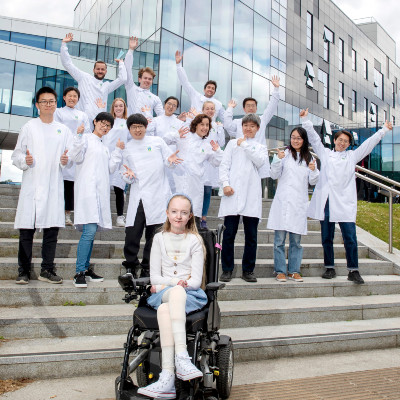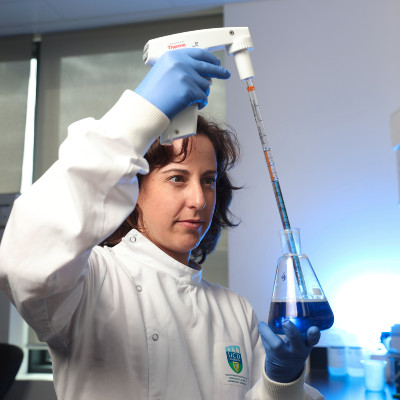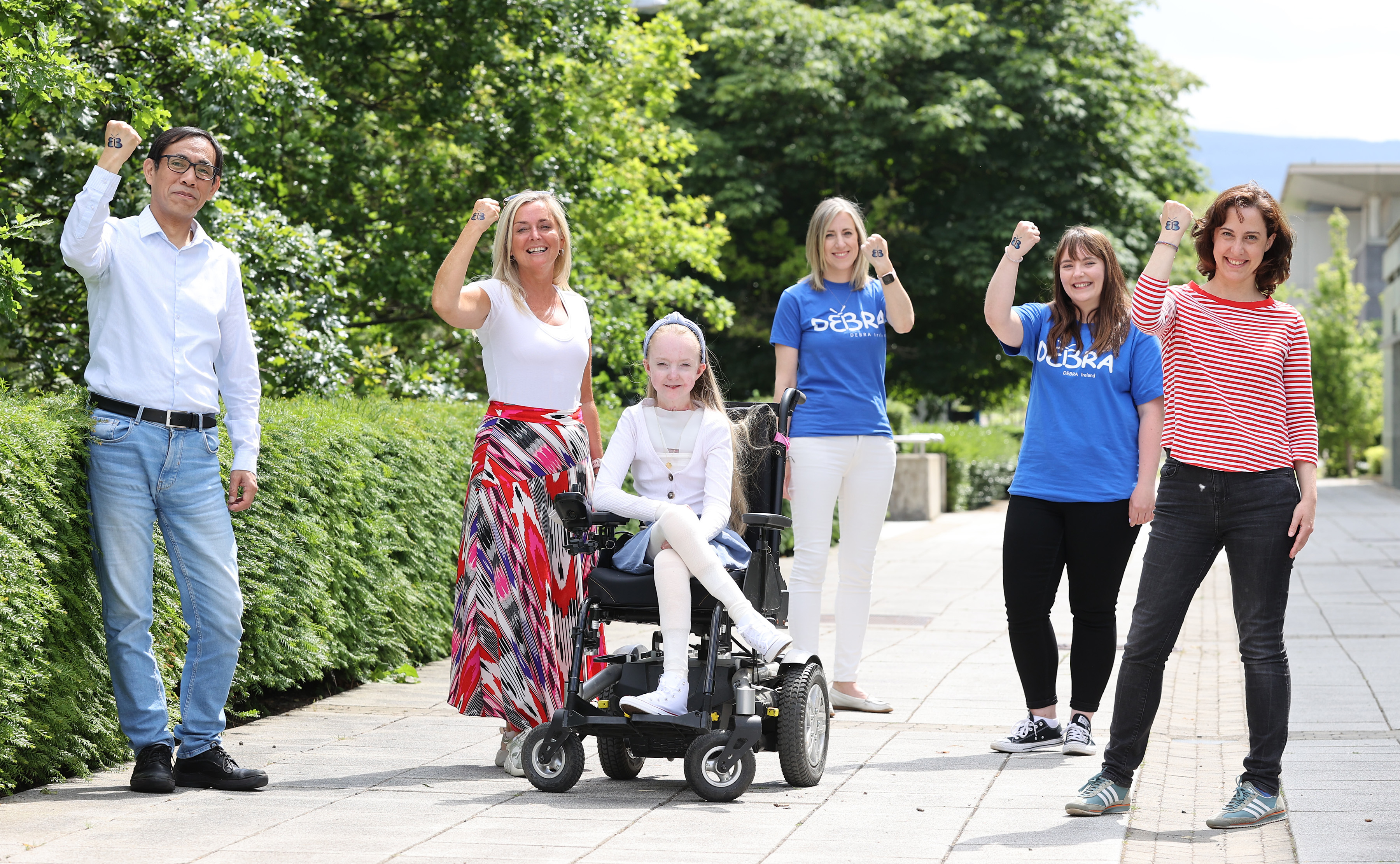Charles Institute researchers to deploy latest generation of gene technology in hopes of developing transformative therapy for those who live with rare and painful skin disease epidermolysis bullosa (EB).

UCD researchers will use the latest generation of gene technology in an attempt to develop a potentially game-changing new therapy that could transform the lives of people with the rare and incredibly painful skin disease epidermolysis bullosa (EB).
Researchers at the UCD Charles Institute of Dermatology are working on a gene-editing system to fix the mutation in the gene that causes people with one of the most severe forms of EB, Recessive Dystrophic, to be born without a particular type of collagen.
Gene editing can change the DNA of a cell to repair disease-causing mutations, and the latest generation of that technology – known as CRISPR– has the potential to be effective in treating patients with genetic disorders such as EB.
The work of the researchers was praised by EB patient Claudia Scanlon after she visited them at the Charles Institute of Dermatology last Thursday.
Claudia has the severe form of the disease, Recessive Dystrophic EB, and with 80% of her body covered in open wounds, she must go through daily bandaging sessions which can last up to three hours.
The brave teen thanked the researchers for their efforts to search for effective treatments that could have a huge impact on the lives of all those who live with EB and their families.
“The research that is going on in UCD is absolutely amazing because it is going towards hopefully one day finding a cure for patients living with EB and making my quality of life so much better,” she said.
The 17-year-old from Dublin, who hopes to be a make-up artist after her Leaving Cert, was joined at UCD by her mum Liz.
“This work offers great hope to everyone who lives with EB and their families that at some point in the future EB will no longer be as life-changing or limiting as it is today,” Liz said.
Mother and daughter were joined by Dr. Sinéad Hickey, Head of Research at DEBRA Ireland which provides day-to-day help and support for EB patients and their families, as well as campaigning to find better treatments and possible cures for the condition.
Donations to DEBRA Ireland from big-hearted Late Late Show viewers topped €400,000 after Claudia appeared on the show on April 16 with her mum Liz and rugby star Johnny Sexton.
“It gives our families huge hope to see ongoing research into new treatments, especially for rare diseases, to give people like Claudia a better quality of life,” said Dr. Hickey.
“Rare diseases often get overlooked when it comes to development of new treatments and we at DEBRA Ireland will continue to drive research into EB to improve the lives of those living with the condition.
“The vaccine development for COVID-19 has improved people’s understanding of how treatments for diseases are developed. We hope this will help build support for research into rare diseases going forward.”

One of the researchers in the UCD Charles Institute of Dermatology, Dr. Irene Lara-Sáez, explained that their work focused on finding a ‘smart scissors’ that would cut the damaged gene which causes the condition and thereby allow patients to heal.
“We work very closely with DEBRA Ireland and people with EB to ensure their needs are at the heart of our research,” she said.
